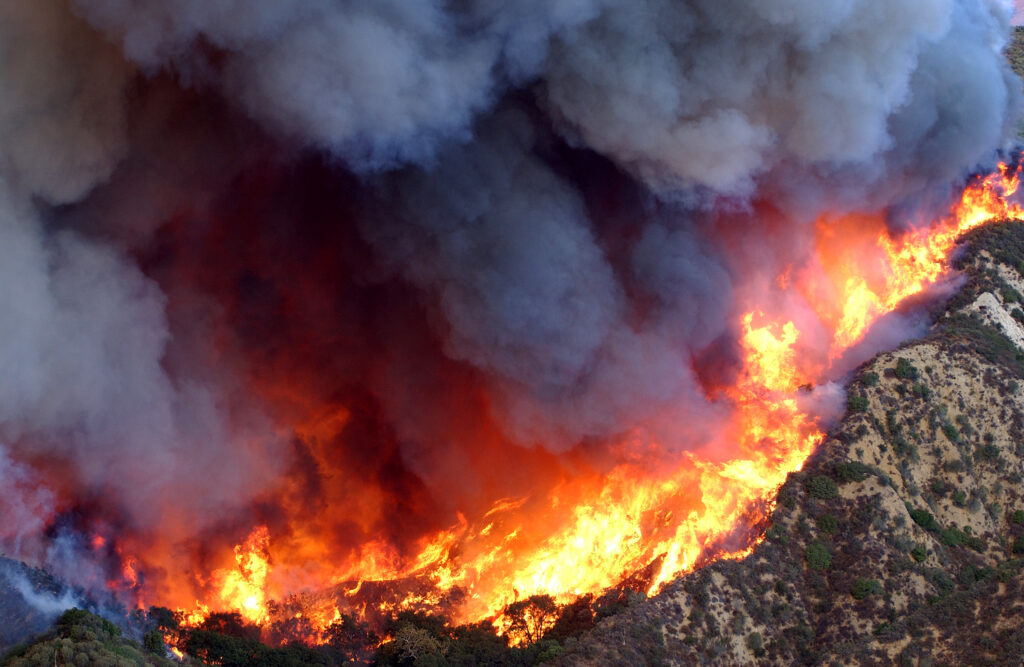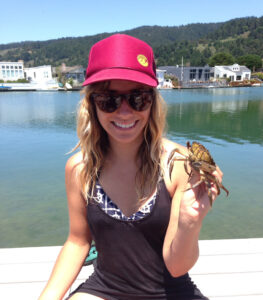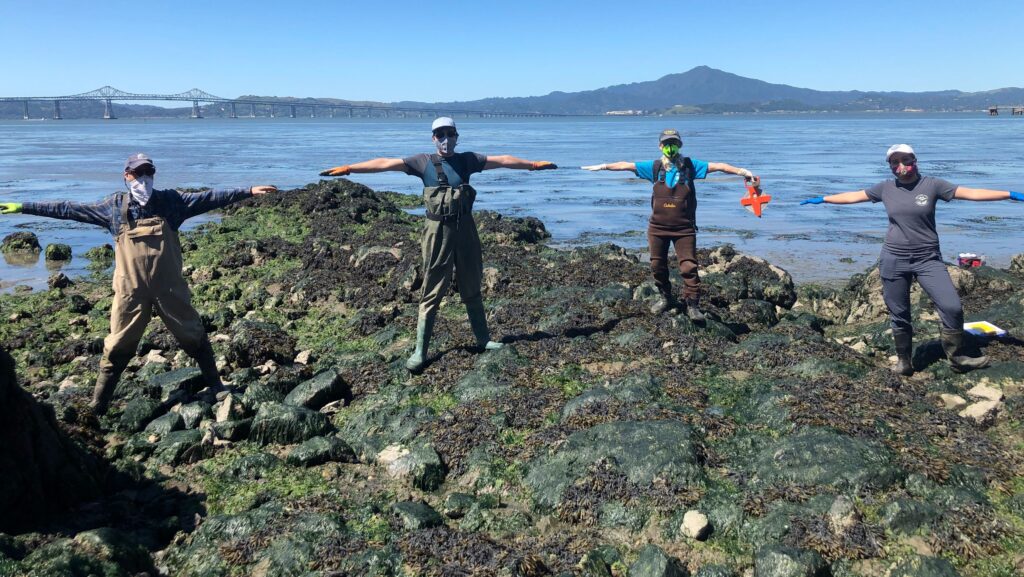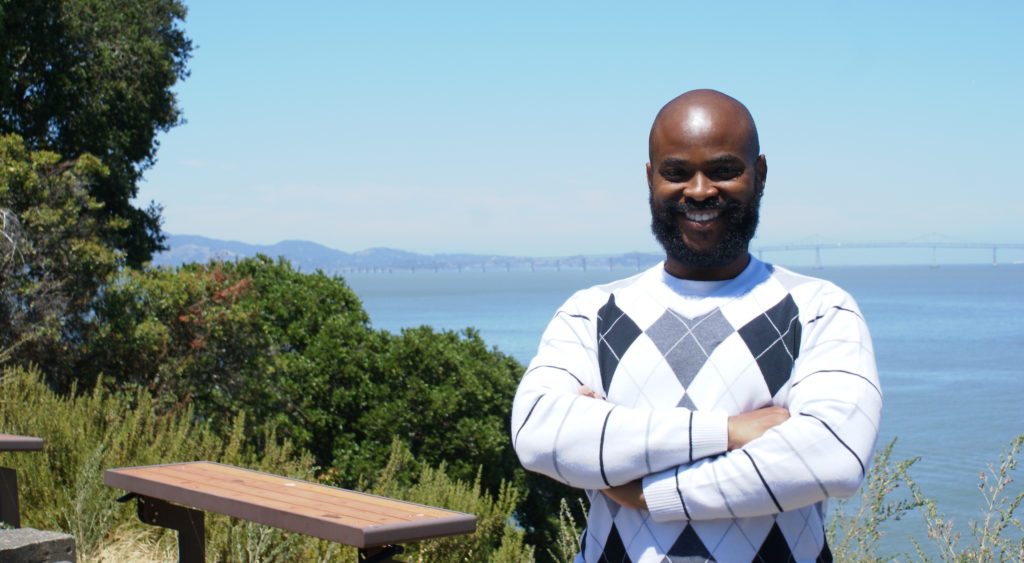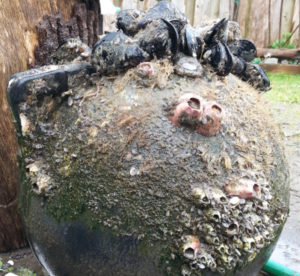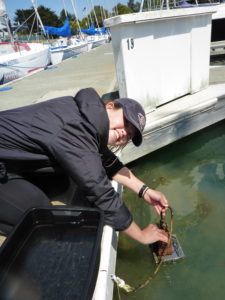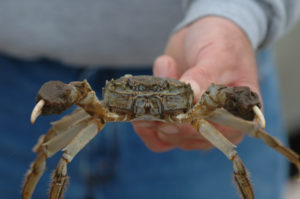by Alison Haigh
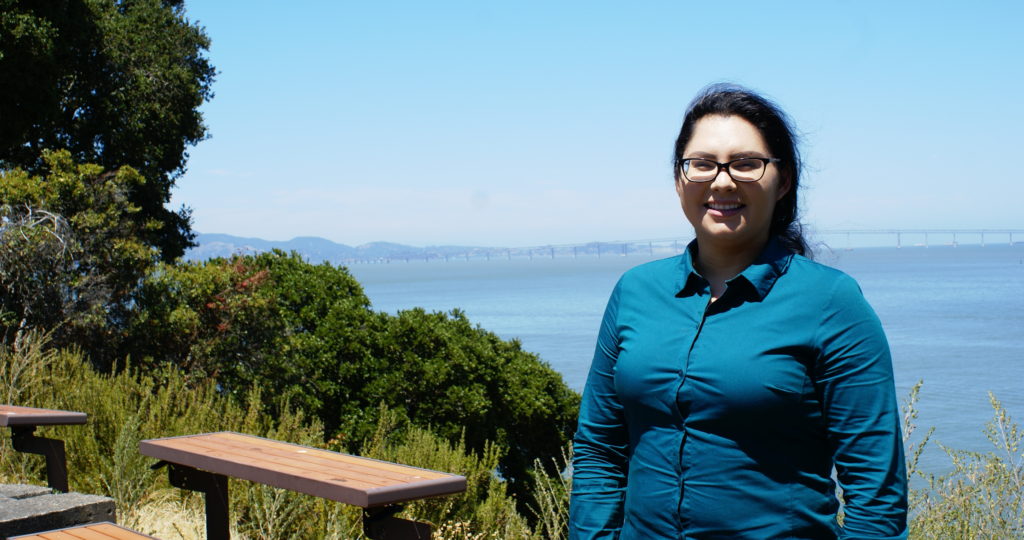
Jessenia Suarez (Credit: Alison Haigh/SERC)
Science comes with some wacky challenges. In the world of marine invasions, that might include sunburns from afternoons tying equipment to docks or worrying about how much seafood powder to feed a plate of invertebrates. But when someone dons a lab coat, they don’t shed their homelife, background, and personal responsibilities. At SERC-West, intern Jessenia Suarez got to know some of those unique challenges while working on her research project. But one of her biggest challenges was outside the lab.
Suarez is a senior marine biology major at San Francisco State University who found her passion for biology in her second year at community college. In summer 2019, she studied how a group of underwater creatures known as the fouling community responds to changes in water temperature. She found the work exciting and refreshing—but she admits that her biggest challenges were balancing the internship with a two-hour commute and finding childcare for her two-year-old daughter, Leia.
“I would spend about an hour and a half with her when I got home, and then it would be time to sleep,” she said. “Not only that, but I was still working my other job [as a CVS pharmacy technician]—very few hours, but it’s still time away from her. It was hard for me, and it was hard for her too.”
Besides caring for her daughter and working a second job, she also had to balance classes. Yet despite a heavier workload than the average intern, Suarez loved the internship experience, and she’s passionate about pursuing research after her degree.
“I had an idea that I liked doing research, but being in charge of my own project brought it to a whole new level, ” Suarez said. “I now know what to expect, and have a feeling that I can handle it.” Click to continue »
